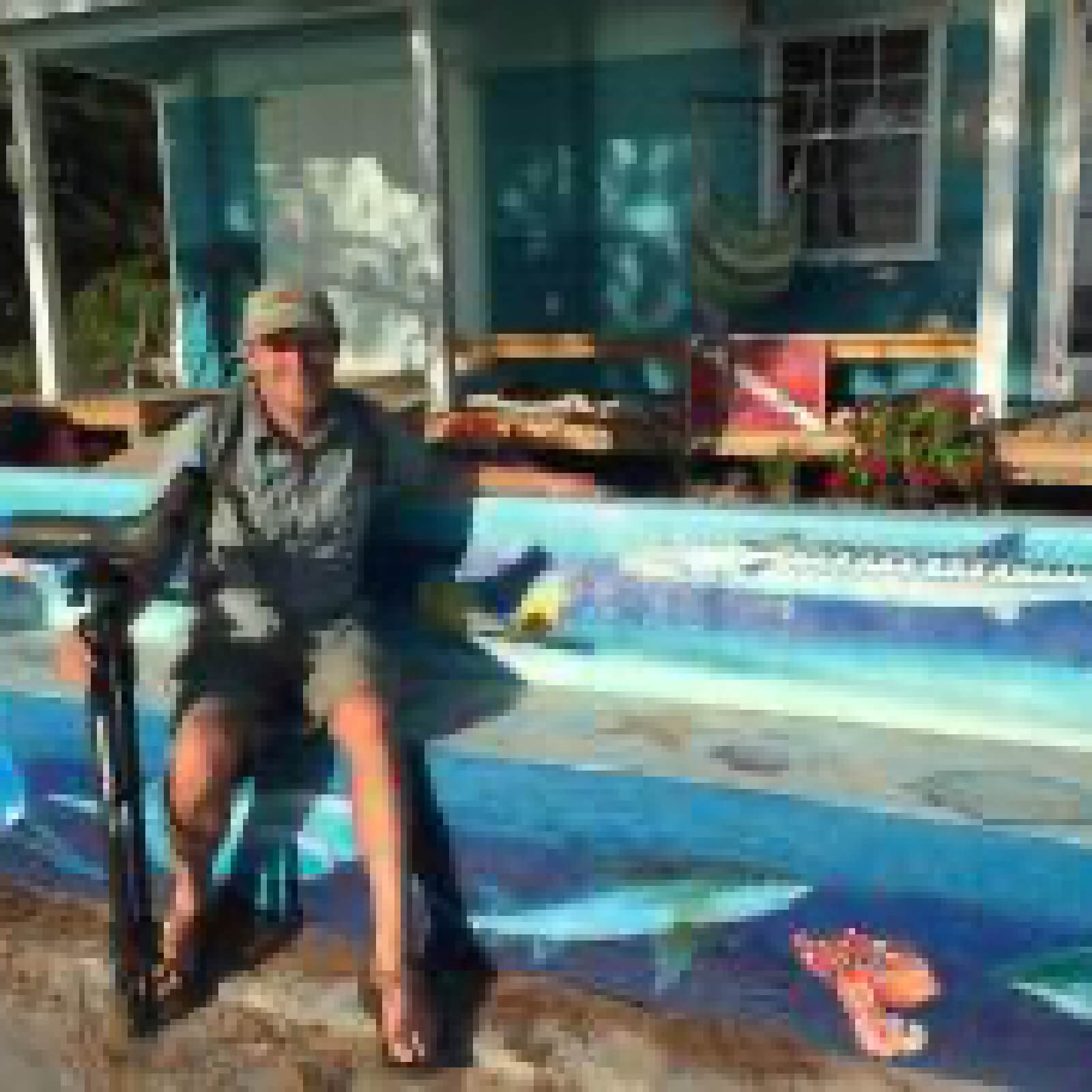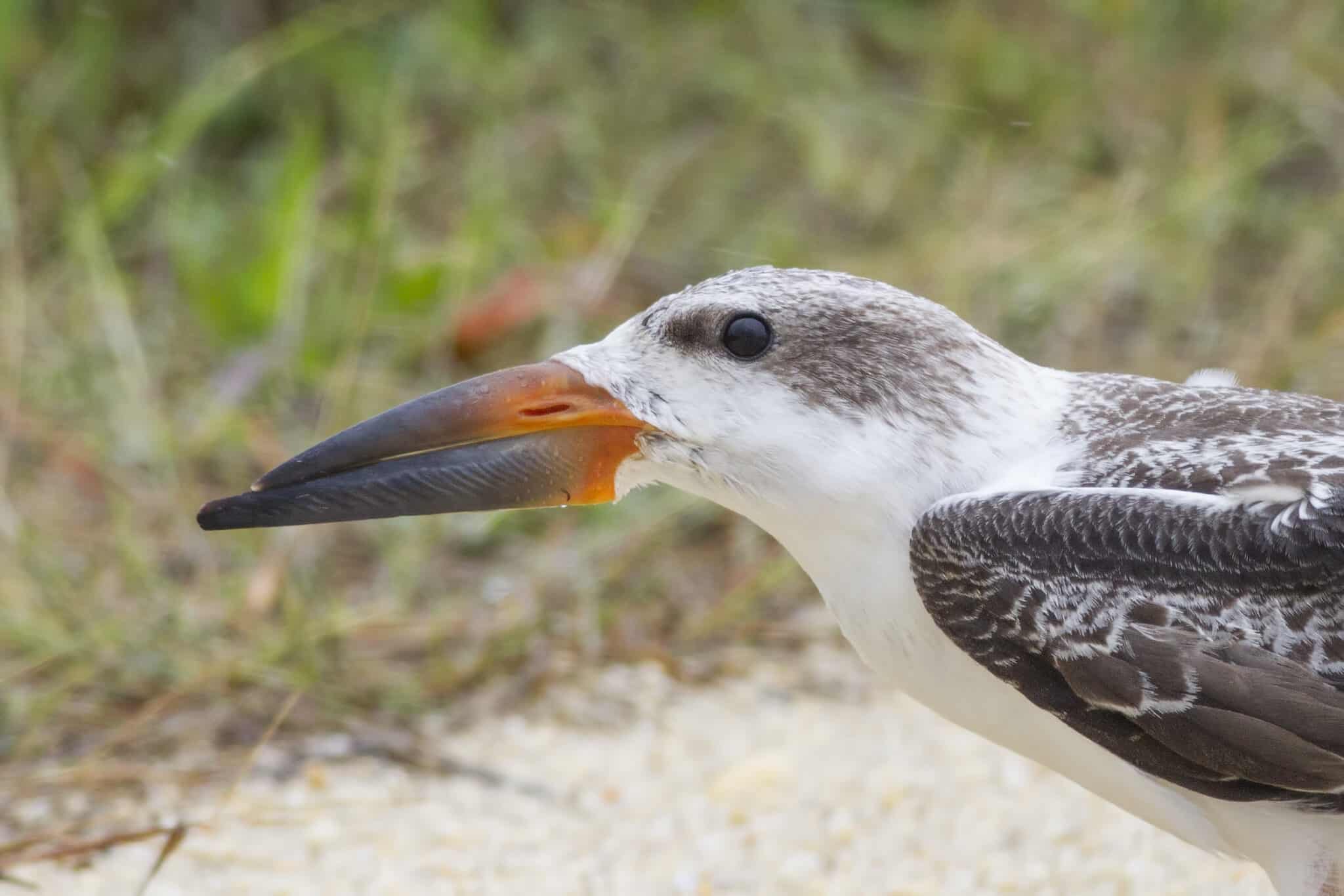For the past dozen years, CWF has provided monitoring and management of beach nesting birds for the Edwin B, Forsythe National Wildlife Refuge at their Holgate and Little Beach Units. Over that time – since Superstorm Sandy created highly suitable habitat at these sites for beach nesting birds – Holgate has become the most important breeding site in the state, hosting the largest concentration of piping plovers and American oystercatchers. More recently, CWF has also provided monitoring at Horseshoe Island, a partnership between New Jersey Fish and Wildlife and the Refuge. That site is now the premier location in the state for colonial beach nesting birds, including for state endangered black skimmers and the northernmost colony of royal terns in the hemisphere.
Monitoring at these critical nesting sites would not be possible without the day to day work put in by the seasonal field technicians hired, trained, and deployed by CWF. Meet this year’s field crew –
Audrey Randazzo – Crew Leader

This is Audrey’s third year with CWF surveying beach nesting birds. After graduating from Delaware Valley University’s conservation and wildlife management program in 2021, she has been doing field research on endangered birds throughout the Eastern U.S. From studying Henslow’s sparrow in North Carolina to working on raptor research in upstate New York, she has a lot of experience with studying birds.
Audrey’s favorite parts of the job are finding nests and watching chicks grow into fledglings. She also really enjoys how her work with CWF allows her to spend more time outside, especially in places that are inaccessible to the public. She is greatly appreciative of the opportunities she has had to work so closely with wildlife and recognizes what a privilege it is.
A raptor-lover at heart, Audrey’s favorite bird is the Northern harrier, but of the beach nesting birds, piping plovers take the cake. She loves their personalities and their adorable chicks, which she affectionately describes as “puffballs with legs”. Her favorite plover is MJ (Michael Jackson) due to his outgoing personality.
Outside of work, Audrey enjoys hiking, paddleboarding, and kayaking.
Gianna Canale

Gianna has been working for CWF for three years and has spent that time focused on the beach nesting birds project. She graduated from Juniata College with a degree in wildlife conservation, inspired by her childhood spent enjoying nature with her family. In addition to her work with CWF, Gianna also helps the state of New Jersey with chronic wasting disease sampling in deer and with the Waterfowl Ecology and Management Program.
Her favorite parts about working for CWF are the closeness she has developed with the crew and the jokes and stories that they share. She also enjoys getting to see the birds incubate and raise their chicks.
Of the beach nesting birds, Gianna’s favorite species is the piping plover because she finds them to have unique personalities and attitudes. She is especially fond of the plover Sasquatch, since she was part of the crew that got to name her and because Sasquatch tends to live up to her name (her nests are often tricky to find).
In her free time, Gianna enjoys birding and being active outdoors.
Kaiulani Sund

Now in her second year with CWF, Kaiulani joined the team after graduating from Gettysburg College with a degree in environmental studies and a minor in data science. During her senior year at Gettysburg, she worked closely with common and Arctic terns on Petit Manan Island in Maine.
For Kaiulani, the most rewarding part of her job is getting to know the people and the birds that she works with. She loves Atlantic puffins and piping plovers, and her favorite plover in the project is Zucchini, who built the first nest she ever found.
When she’s not working, Kaiulani can be found reading and horseback riding.
Mary Adams

This is Mary’s first season with CWF. She attended Franklin & Marshall College, majoring in biology and minoring in environmental studies and French. While in college, she did a thesis on avian habitat selection and during her senior year, she studied wildlife ecology in Dublin, Ireland. She has worked for a wildlife refuge, trained scent-detection dogs, and worked at Hawk Mountain Sanctuary in Pennsylvania. Even with that amazing lineup of past experience, Mary says that her job with CWF is her favorite experience yet.
She loves finding new nests, seeing each one as a new opportunity for the success of the species. Of the bird species she works with, Mary’s favorite is the American oystercatcher. Her favorite plover is MJ (Michael Jackson), because his was the first plover nest she ever found. Her favorite bird species overall, though, is the red-winged blackbird.
Mary is a proud Philadelphia Phillies fan and she is currently fostering a dog from a shelter. She also likes to read.
Madison Patterson

Madison joined CWF this past spring after graduating from Monmouth University, where she majored in biology. In college, she joined a wildlife ecology research lab in which she studied mammalian predation of box turtles.
While her background is mainly in herpetology, she has grown to love working with birds, especially black skimmers and a plover named Pikachu, whose nest she found on her first day out surveying. She feels that she has learned so much about shorebirds in her time with the Foundation, from their behavior to their conservation, and she appreciates having the opportunity to do research that she finds so fascinating.
Back at Monmouth, Madison was the vice president of their outdoors club. She frequently goes hiking, camping and backpacking with her friends, and recently, she has been learning how to forage wild edible plants and fungi.
 Earlier this month, the 25th annual American Oystercatcher Working Group meeting was held in New Jersey at the Cape May Point Arts and Science Center. Staff from CWF, The Wetlands Institute, and NJDEP Fish and Wildlife, formed the local organizing committee that helped plan, host, and stage the meeting. Nearly 125 Working Group members attended the meeting either in-person or virtually over the course of two days.
Earlier this month, the 25th annual American Oystercatcher Working Group meeting was held in New Jersey at the Cape May Point Arts and Science Center. Staff from CWF, The Wetlands Institute, and NJDEP Fish and Wildlife, formed the local organizing committee that helped plan, host, and stage the meeting. Nearly 125 Working Group members attended the meeting either in-person or virtually over the course of two days.
























